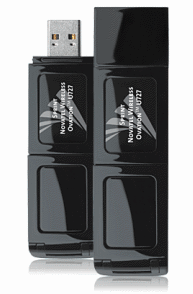
First, A Little Background on Broadband
BROADBAND IS AN INTERNET CONNECTION that is always on and gives you high-speed access and downloads for a monthly charge.
Accessing the Internet using a broadband connection can be done in different ways – one of the better-known ways is by using an existing telephone or cable-TV line. You can also have broadband accessibility using other technologies, like wireless-radio, satellite, and power lines.
Using broadband comes with many benefits that make the Internet all the more easier to access, and more productive.
Internet use is much faster than dial up and becomes enjoyable as you’re able to transfer files quickly, download music and video clips in seconds and minutes, work from home with high-speed access, and much more.
What’s not to like about broadband? It’s fast, easy, and always on, but there is even more about broadband to like with the option to choose what kind of broadband you would like to use based on your own personal style and needs.
One type of broadband goes by the name of ADSL (Asymmetric Digital Subscriber Line) or DSL for short. DSL is a high-speed Internet access service that uses the same line as your phone, but doesn’t prevent you from using your phone at the same time. DSL is the most common type of broadband connection method. There are three types of DSL modems:
- USB ADSL modem- Basically, this is a faster version of any average modem, which many providers give you upon signing up.
- ADSL router- A DSL router allows you to plug in more than one computer into the account you signed up for. With the use of cables you can have a high-speed broadband connection on more than one computer without having to spend money on an extra modem.
- ADSL Wi-Fi router- Installing a Wi-Fi router enables you to connect to the Internet without the use of any cables whatsoever. With a Wi-Fi router you can use the Internet on your laptop, PDA, or even handheld games from anywhere you want in the house.
Another type of broadband connection is called Cable. With Cable you’re able to get your broadband service through – you guessed it – a cable. If you also use digital TV, you can sometimes get a better price, because you can usually get a bundle package for your digital television, broadband, and phone, and you pay only one monthly fee for all three services. Cable works by picking up your broadband signal from a set up box or a cable modem that your service provider will provide for you.
Yet another type of broadband connection, and the subject of this article, is called 3G Mobile Phone. This is a fresh new piece of technology that allows you to connect to the Internet from your laptop while you’re on the go. The major mobile phone companies make the service possible, through a card that you plug into your laptop.
The cost for a mobile broadband connection will vary, depending on the Internet Service Provider (ISP) you choose and what kind of plan you set up with that ISP. The Internet Service Provider is simply the company in which you set up your Internet connection with. The costs that you may pay are: A one-time activation fee, the cost of any sort of hardware or software that you may need to purchase (the broadband card), an installation charge (it may be free), a charge for downloading data, web hosting and email services. All of this will most likely be contained in a monthly fee.
Mobile Broadband
Mobile broadband is the name that describes the 3G services, which are made possible by HSDPA (High Speed Downlink Packet Access) and HSUPA (High Speed Uplink Packet Access); these are the latest technologies on the developmental path. 3G stands for the third generation of mobile phone standards and technology, exceeding 2G.
Mobile broadband makes it possible to access the Internet for mobile devices such as laptops, PDA’s, Blackberrys and Smartphones. Mobile broadband offers the usual Internet services like email and surfing which are generally faster than dial-up speeds, but not as fast as land-based broadband and high-speed connectivity.
Companies that offer and provide Mobile broadband and wireless broadband include: Sprint, Cingular (AT&T), Verizon, and others.
Choosing the right mobile broadband service provider simply comes down to a race between speed and coverage. You want to first of all research whether or not the company covers your area and how reliable the connection is based on travel, speed, etc. But don’t just look for the big mobile broadband providers; a small, “not so popular” company will do fine just as long as they offer coverage in your area and have decently reliable speeds. Being biased towards the popular guys doesn’t get you better service.
Here are some of the companies:
- Sprint’s broadband cards use EV-DO technology (Evolution Data Optimized), which gives you DSL speeds for your laptop. EV-DO allows you to take the Internet with you to surf the web pretty much anywhere – in the car, in the airport, in the office – you name it. The most recently upgraded EV-DO is called Revision A and provides considerably increased upload speeds than the older Revision 0.Sprint also has a USB-device that gives you the same functionality as the card, and recently released a USB-device that is the smallest card available. Sprint’s broadband network gives you access to the Internet anywhere in the US. Sprints Mobile Broadband Network gives you unlimited bandwidth for just $59.99 per month. Connection cards range anywhere from $29.00 to $179.00. Connection speeds for Sprint
average from 400 to 700 Kbps with peak rates up to 3Mbps. - Cingular wireless (AT&T) runs on its personalized BroadbandConnect service, which is putting up some strong competition to EV-DO in some major markets. BroadbandConnect is based on HSDPA, or High Speed Downlink Packet Access. Cingular’s newer BroadbandConnect runs about 3 to 5 times faster than its previous high-speed data service EDGE (Enhanced data Rates for GSM Evolution). Monthly data plans for Cingular’s BroadbandConnect start at $19.99. $59.99 gets you unlimited Data Connect plan including the option to buy Sierra or Novatel card (cards for Cingular) for $99.99. Connection speeds for Cingular or AT&T run on an average of 400Kbps to 700Kbps.
- Verizon wireless also runs on the EV-DO technology, and has faster upload speeds with the Revision A upgrade. You can access the Internet at broadband speeds with the network that is covering more then 240 million people in 248 metropolitan areas throughout the United States. Connection speeds for Verizon run from 400Kbps to 700Kbps. Verizon’s unlimited wireless broadband is around $59.99 per month.
- Alltel wireless is an upcoming mobile broadband provider that is running on the EV-DO technology and is reaching laptops, smart phones and handhelds for limited areas in the US. Progress seems to be running smoothly for them with their wireless broadband bundle service of $59.99 per month, or they charge $79.99 per month for unlimited wireless broadband access. Alltel’s national smart phone plan costs $29.99 per month.
- T-Mobile has been slow to bring mobile broadband to the USA, and has not yet finished its network, but plans to be mostly completed by the latter part of 2008.
While Sprint, Cingular, and Verizon are big mobile broadband companies in the United States; there are other broadband companies such as Vodafone, T-Mobile, 3, Orange, Virgin Mobile, O2, and Carphone Warehouse that are major mobile broadband companies in the UK.
If you are a traveler or part of a business with mobile workers then you can still be in touch with the Internet no matter where you are.
Global Internet roaming enables you to access the Internet and all of its apparatus at high-speeds throughout 170 countries and thousands of locations around the world.
Signing up to the largest Internet network is simple, all you have to do is: 1) Download and install the Global Roaming access point locator, 2) Select the country and the city in which you are located, and 3) choose the dial-up, wireless, toll free, Ethernet broadband, Wi-Fi, restaurant, airport, hotel, etc. point of access and click “connect”.
The evolution of mobile broadband is definitely promising with some big companies already revealing some of their plans for the future.
In August of 2006 Spring Nextel announced that they’re selecting WiMAX (Ieee802.16e-2005) technology for a next generation of wireless network, which will plan to utilize the company’s 2.5GHz spectrum assets. WiMAX is basically a wireless digital communications system that will extend the coverage of broadband wireless access beyond its predecessor that is Wi-Fi. Sprint announced many service areas for their launch of WiMAX this year and plans to cover at least 100 million more people by 2008’s end. The next generation of wireless broadband networking (4G) is highly expected to further harden Sprint’s data leadership by extending into a wider array of data-centric devices. Sprint is working hard to make their “the Internet is everywhere” vision into a reality.
Cingular’s already innovative GSM 3G UMTS/HSDPA network is expected to evolve to a little something called LTE or long term evolution, which is expected to provide users with downlink speeds of 100mbps. That’s as fast as land based broadband!
Verizon also has a few plans for the future. They are looking to set themselves apart from the rest of the competition, and at the same time assure technology, other than WiMaX, that will improve speed and all around capabilities of their service.
The future of both broadband and wireless mobile broadband looks extremely bright, and I’m sure we all have a lot to look forward to in the near future with constant expansions and improvements being made to the Internet and its use, which was just made available to the public in the early 1980’s. Since there has already been so much promise shown to us since then, imagine what we have to look forward to in the next three decades!

